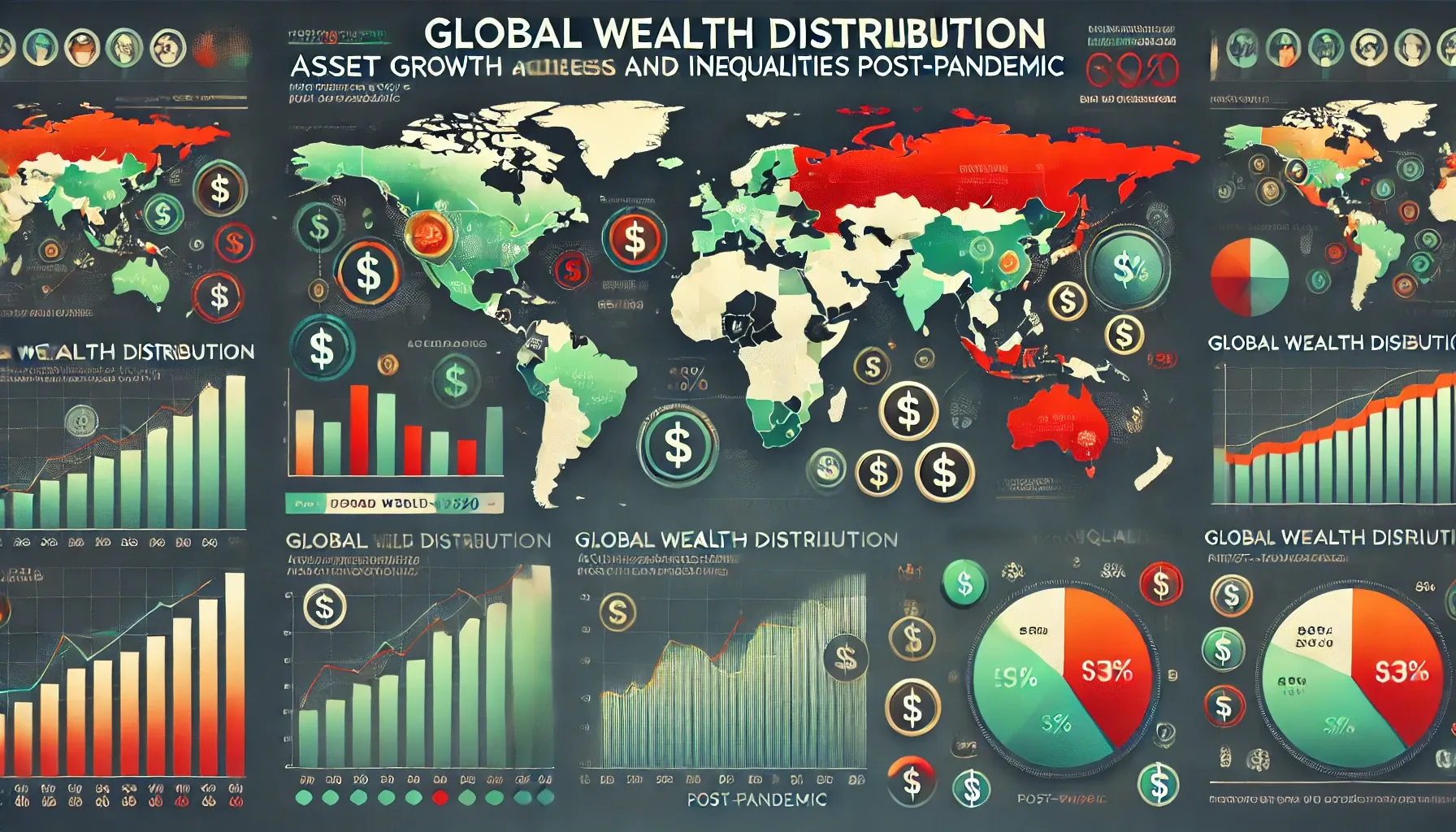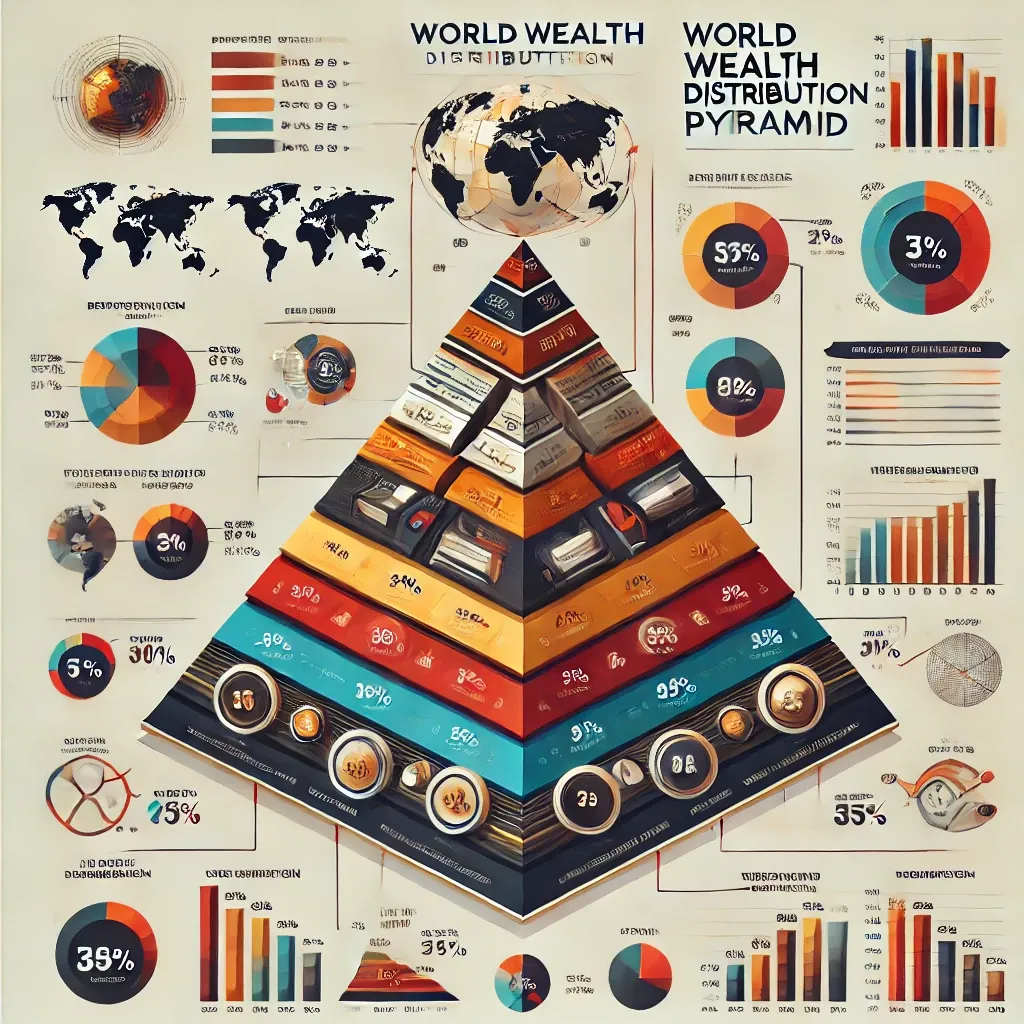How has the pandemic affected global wealth and social inequality?

- How do the pandemic and the global economy affect household wealth?
- How does wealth grow in different countries around the world?
Credit Suisse defines wealth as the total value of financial and tangible assets owned by households. This primarily includes the valuation of residential real estate minus all debt obligations. With the start of the new decade, there has been a steady growth in the financial position of the affluent segment of the population. After the onset of 2020, the process of wealth accumulation for households became heavily dependent on the economic consequences of the COVID-19 pandemic and the measures taken by government and international organizations to mitigate the negative impacts on businesses and individuals.
As financial markets began to recover, thanks to the swift actions taken by governments and central banks, most households were able to offset their financial losses by mid-2020. Assessing the impact of global inflation and the conflict in Ukraine on the world economy is still premature. However, it can be noted that the active growth of financial markets in 2021 created extremely favorable conditions for the affluent segments of the population.
Global wealth in 2021
By the end of 2021, the total global wealth reached $463.6 trillion, which represents a growth of 9.8% compared to the previous year. This figure was significantly higher than the average growth of 6.6% observed since the beginning of the 21st century. Personal wealth per adult resident increased by 8.4%, reaching $87,489. When accounting for the impact of currency fluctuations, total global wealth increased by 12.7% in 2021, marking the highest value in the history of the research.
The relationship with exchange rates
It is impossible not to note the relationship between household wealth and changes in exchange rates. Often, fluctuations in currency rates lead to significant financial losses or, conversely, gains, especially for wealth denominated in US dollars. On average, in 2021, many currencies of various countries depreciated by 2.9% against the dollar.
Countries with wealth growth
In the following chart, we can examine the countries where the per capita income (in US dollars) has increased the most:
- New Zealand:an increase to $114,289 (+32%) due to the rapid rise in housing prices and the strengthening of the local currency.
- USA:increase to $73,630.
- Australia:an increase to $66,354.
- Canada:also demonstrated growth of $66,354.
Countries with losses in wealth
It is worth mentioning that in some countries, relatively modest financial losses (less than $20,000) were observed, which can also be explained by the depreciation of national currencies against the dollar. Examples include:
Analysis of changes in well-being
In 2021, the analysis of changes in wealth per adult in dollars also included a study of the real estate market, immigration issues, and investment aspects. The average wealth level of residents in Russia ranged from 25,000 to 100,000 dollars. This is clearly illustrated by the world wealth map, highlighting significant differences in living standards between various countries.
Countries with a high level of prosperity
There are countries in the world where the financial situation of the adult population exceeds 100 thousand dollars, and most of these countries are located in North America, Western Europe, as well as in the wealthier parts of East Asia, the Pacific region, and the Middle East. Russia and other countries with similar indicators are in the middle segment, with a wealth level ranging from 25 to 100 thousand dollars per capita.
29 September
29 January
9 October 2024
9 October 2024

Low level of well-being
There are also lower categories, including countries where the wealth per capita ranges from 5,000 to 25,000 dollars. Such countries include:
- India
- Indonesia
- Iran
- Philippines
- Other countries in Latin America
- Countries south of the Sahara, including South Africa
Ultimately, the smallest group consists of Central African countries, where the level of wealth is below 5,000 dollars per person.
The growth in the number of dollar millionaires
The number of dollar millionaires has significantly increased, rising fivefold since the beginning of the 21st century. The structure of wealth shows the distribution of global wealth among the adult population. According to data from Credit Suisse, in 202153%all adults around the world (that's about2.8 billion people) had a net worth of less than 10 thousand dollars. In more developed countries, the proportion of such people is about30%and for many of them, this is a temporary situation caused by business losses or job loss. Meanwhile, in developing regions, more80%The adult population is also in this category, and this is considered a normal state throughout life.
Wealth segment from 10 to 100 thousand dollars
The segment of the population with a net worth of $10,000 to $100,000 has seen the largest increase this century. The number of such individuals has more than tripled, rising from504 millionin the year 2000 BC1.8 billionBy the end of 2021. This confirms the growth of the economic level in developing countries, especially in China, and the expansion of the middle class in these regions.
The middle class and dollar millionaires
The middle class, with a wealth ranging from $100,000 to $1 million, is typically equivalent to the middle class in developed countries and has also tripled this century — from208 millionto627 milliona person. At the top of this financial structure are millionaires. In 2021, their number reached62.5 millionwhat constitutes1.2%of the total adult population of the planet. Over the year, this figure has increased by5.2 millionthat corresponds to a height of21%The overall wealth of dollar millionaires has increased fivefold — from41.4 trillion dollarsin the year 2000 BC221.7 trillion dollarsBy 2021, the share of millionaires in global wealth had increased from35%to48%for the same period.

Conclusion
In conclusion, the analysis of household wealth on a global scale allows us to draw several important conclusions. Against the backdrop of global economic changes since 2020, the wealth of affluent individuals has noticeably increased, largely due to the actions of governments and financial institutions aimed at mitigating the effects of the COVID-19 pandemic.
The launch of measures to restore and stabilize financial markets contributed to global wealth reaching record levels by the end of 2021, indicating a rapid recovery of the economy after the crisis.
Growth at the level of $463.6 trillionIt has become a testament not only to the successful actions of governments but also to the fact that wealthy individuals have been able to take advantage of the changing market conditions. Inflation and the unstable situation in various parts of the world, including Ukraine, have already begun to have a noticeable impact on the economy, but perhaps this creates more new opportunities for the rich than threats.
Differences in wealth
It is also interesting to note that wealth per capita varies significantly across different countries. While high-income countries like New Zealand and the USA experience steady growth in prosperity, in other regions, especially in low-income countries, the majority of people remain in a state of low wealth, indicating the persistence of economic inequality.
- Growth of wealth per capitain highly developed countries.
- Maintaining a low level of well-beingin low-income countries.
Inequality in wealth distribution
A comparison of different population groups by wealth levels has shown that there is still a clear division in the world between the rich, the middle class, and the poor.Increase in the number of dollar millionairesTheir share of global wealth indicates that growing inequality is becoming one of the main issues of our time.
Thus, the future of prosperity, both at the level of individual countries and in a global context, depends on many factors:
- Economic policy;
- Changes in the financial markets;
- Global trends, including demographic and social changes.
Our goal should not only be focused on research and analysis but also on finding ways to minimize this inequality, so that prosperity becomes more accessible to all segments of the population. It is important that successful practices in some countries can be adapted and implemented in others, helping to achieve a more equitable distribution of resources.
Comment
Popular Posts
29 September
326
9 October 2024
1484
9 October 2024
9932
Popular Offers

Subscribe to the newsletter from Hatamatata.com!
Subscribe to the newsletter from Hatamatata.com!
I agree to the processing of personal data and confidentiality rules of Hatamatata











